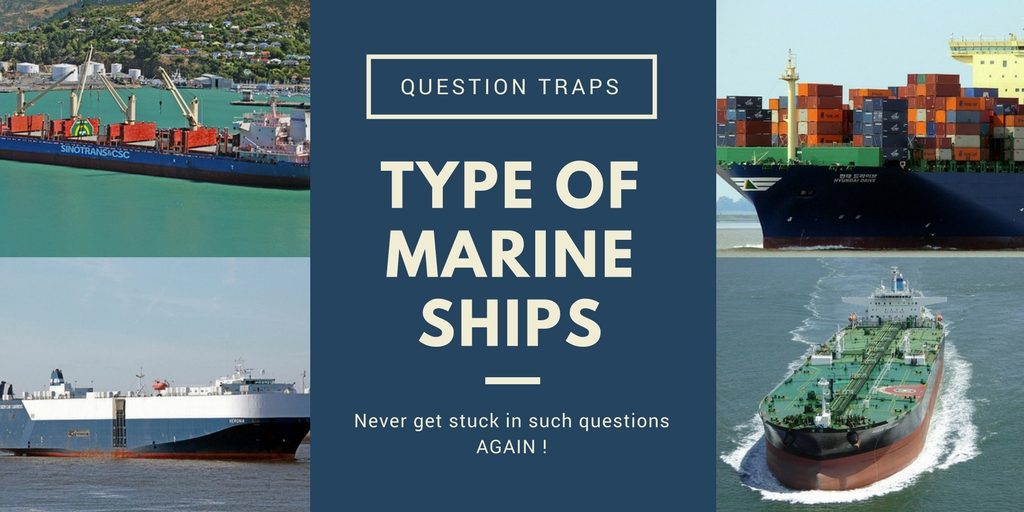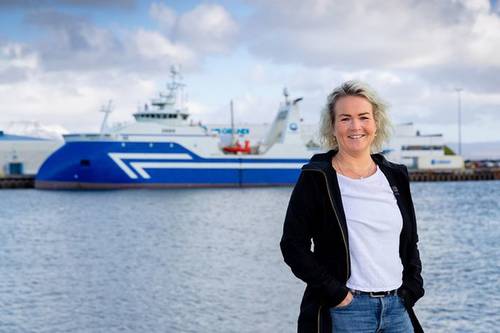Last Updated on June 7, 2020 by Amit Abhishek
Nowadays ships have become complex and efficient; designed for a certain type of cargo. There are different types of ships based on their cargo/application. Further, these ships are then divided based on their size. Most probably, you might have not thought much about the types of ships in the past. After all, they all appear similar, don’t they?
That’s what I feel before pursuing my career as a marine engineer. Chances are you are going to join the navy, is working in the maritime field, or too passionate about ships to look for “types of ships”.
Knowing the different types of ships helps in identification, complying with safety regulations, certificates, and training in case you want to be a mariner.
Each ship is unique in itself with quite similarities in between. The different types of ships in commercial shipping are classified on the basis of its size, cargo, function, and construction.
You might know them already If you are a mariner or you have some relatives in the merchant navy. If not, there are mainly seven types of ships out there in commercial shipping. We will discuss that in detail once; we learn what ship is and its brief history.
Types of Ships Based on Their Application
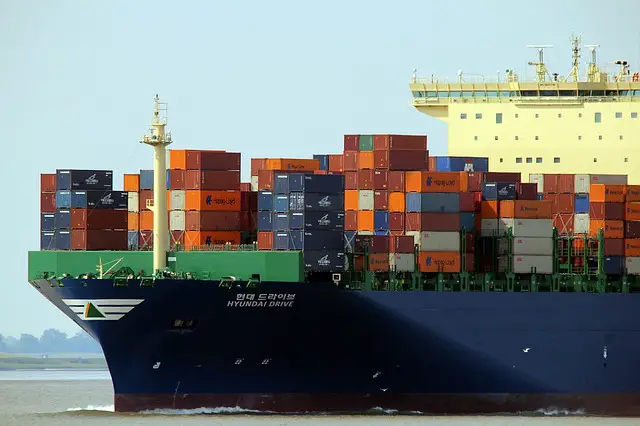
1. Container Cargo Ship
Container ships are designed to carry large containers. Shipping containers are of the size of a truck with 20 feet by 8 feet to 10 feet by 8 feet in dimension. These containers are designed in a way that; they can be easily transported through trains, trucks and ships without any problem.
These ships are on liner trade delivering goods from one place to another across the globe. A typical container ship contains around 10-15 thousand containers in its single or double deck hull.
They are used to transport the world’s manufactured goods; such as processed food, electronics, machinery, spares, furniture, and tools.
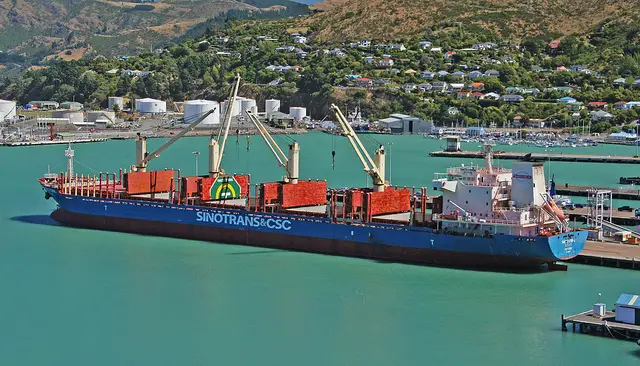
2. Bulk Carrier
The powerhouse of the world’s economic engine; these ships carry the essential raw materials for various industries from Agro-based to heavy manufacturing.
These ships are also called as bulkees or frights and are easily identified by the large hydraulic hatches covering its holds. They are designed to carry unpacked raw materials such as wood, grain, ore, and coal.
In these ships; cargo is poured down directly into the holds according to the charter plan. These ships are around 800-1200 feet long and account for 15-18% of the total merchant fleet.
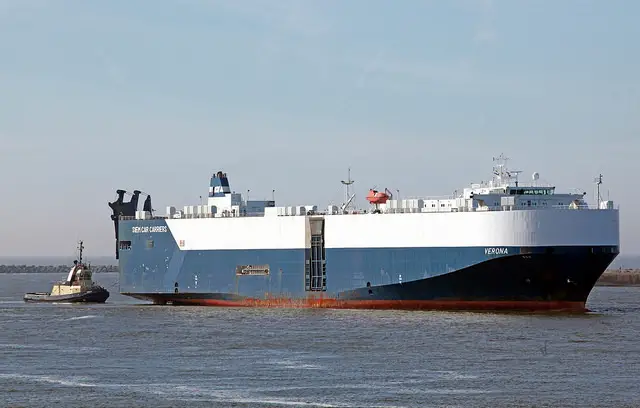
3. Ro-Ro Vessels
Most vehicles that you use on a daily basis are transported across the globe using a special type of ships known as Ro-Ro or car carriers. Basically they are like a big floating garage (Yes ! like that in your house); where newly made cars are parked, latched, and then shipped.
Generally, these ships are 500-700 feet long with high freeboard. These ships are used to transport vehicles like trucks, tractors, and cars all over the globe in a safe efficient way.
When it comes to Ro-Ro ships there is also too many variations; there are complete Ro-Ro ships, Ro-Ro + container ships, pure car carrier, pure truck carrier, Complex Ro-Ro ships with general cargo abilities etc.
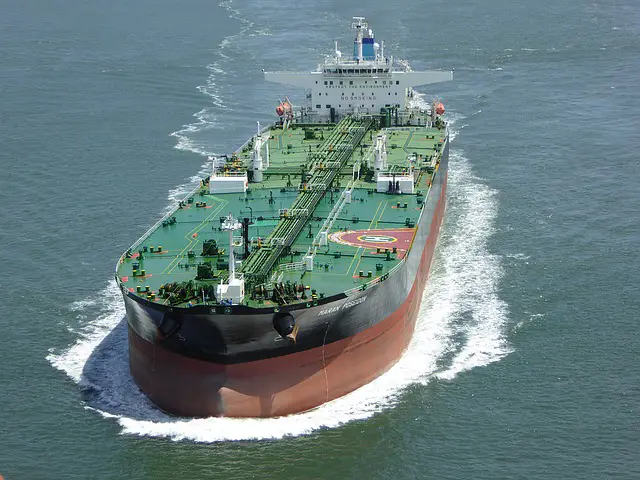
4. Tankers
With the need to fill the supply and demand gap for liquid cargo; came the monster we all humbly call tankers. Since tankers are designed to transport cargo in bulk; they ensure a continuous flow of oil, gas, chemicals, juice, and wines to dedicated industries and your home.
It is a special type of ship constructed to carry heavy bulk of liquid cargo. They are primarily used to carry petroleum and its derivatives; but can also be used to carry water, juice, wine, chemicals etc.
They might look similar to those of bulk carriers apart from missing hatches; (There are small manholes provided for inspection and maintenance purposes). These ships are normally quite large in size with a large part of its fleet being supertankers.
Tankers can be classified into following categories depending on its cargo:
4.1 Oil Tankers
Based on the type or grade of petroleum products it carries; oil tankers are divided into two main types i.e crude oil tanker and the product tanker. Crude oil is used to transport crude oil while a product tanker is used to transport refined oil; such as diesel, jet fuels, and petrol.
While crude oil tanker deal with a large sum of unrefined petroleum; product tankers carry refined petroleum ready for consumption.
4.2 Gas Tankers
These are the modified form of tankers well suited for transporting gases such as LPG, Natural gas, LNG, Etheline, etc. They are further classified into fully pressurized, semi refrigerated, fully refrigerated, ethylene, and LPG, LNG ships. They carry gas under high pressure, extremely low temperatures, or both.
4.3 Chemical Tankers
They are another type of modified tankers well suited for carrying hazardous chemicals; such as acid, base, alcohol, and other reactive chemicals in bulk. Governed under MARPOL Annex II there are far strict rules for the construction and operational safeties related to these ships.
4.4 Juice & Wine Tankers
According to their name; they are used to transport juice and wine from one place to another. Although they have somewhat similar construction features of chemical tankers they are subjected to least regulations and safeties.
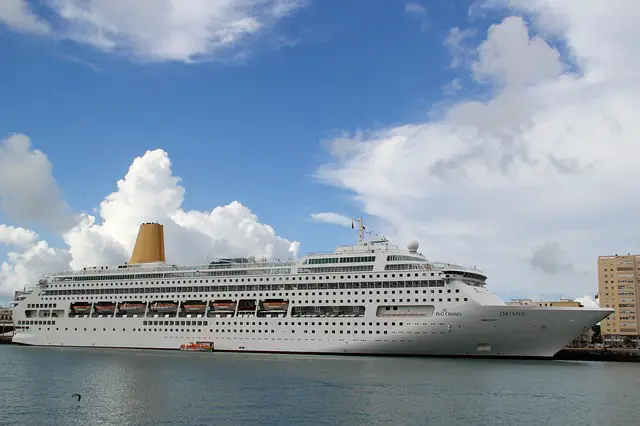
5. Passenger Ships
Half a century ago, passenger ships were used to go from one place to another by many people across the world. But today passenger ships are mostly used either as ferries or cruise ships for pleasure voyage.
While ferries are meant for a small number of passengers traveling over a shorter distance with fewer facilities. A cruise on the other hand is built for 5 to 6 thousand passengers with luxurious facilities for recreational activities.
They provide luxury voyages with beautiful sightseeing. They are like a five start hotel floating on the sea which focuses on the user experience rather than reaching a destination on or before time.
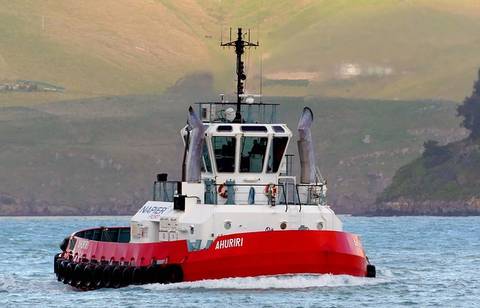
6. Specialized Support Vessels
These are the ships used to assist the work of commercial vessels like ice breakers, dredging vessels and other offshore support vessels like tugs. They can also be used for specialized purposes such as laying underground sea cables and other research purposes.
Tug boat or Tugboats are a special vessel used mainly near the harbor and ports to assist in docking of the ships. Its primary job is to assist large ships during maneuvering and docking operation.
7. Fishing Vessel
There are various types of fishing vessels that are employed in fishing activities from most known fishing trawlers to, fish factory ships, Seiners, longliners, crabers, and other medium and small fishing vessels used for the activity.
A trawler or sometimes known as the dragger catch fish by towing trawls or dredges behind the vehicle. It is the most used commercial fishing vessel and can go far distance to fish.
Types of Ships Based on Their Sizes
1. Regular Ships & Tankers
These are the ships which came under the small and mid category of oil tankers with 10,000 to 60,000 tonnes of dead weight. They are usually tankers that run in coastal reason load and unload cargo from large tankers in case of sallow port or harbor.
2. Panamax Ships And Tankers
The largest oil tanker which can pass through the Panama canal is known as Panamax. These ships are most used as the product tanker carrying refined petroleum. Usually, these ships have a deadweight of 55,000 to 80,000. One such ship can carry oil up to 500,000 barrels at a time.
3. Aframax Vessels
Not all ports can handle ships of very large size due to geographical and draft restrictions. This is when ships like Aframax came handy. These ships with a deadweight of 70,000 to 120,000 tonnes are used in the Mediterranean, black sea, the Caribbean, and china sea in between ports with not too deep draft to handle larger ships.
4. NewPanamax Ships
These are the types of ships that are designed to pass through the newly built larger passage of the Panama canal. These ships have a deadweight of 80,000 to 130,000. One such ship can carry oil up to 13,000 TEU or about 900,000 barrels at a time.
5. Suezmax Vessels
Just like the Panamax the Suezmax is the largest size of vessel which can pass through the Suez canal. These ships carry both crude and refined petroleum and are of about 120,000 to 160,000 tonnes of dead weight. in layman terms it accounts for almost 1,000,000 barrels of oil carrying capacity.
6. VLCC Ships And Tankers
The VLCC or Very Large Crude Carrier was first developed in the 1960s. This is the most used oil tanker type in the shipping industry with 2, 50,000 tonnages of dead weight. These ships are capable to carry more than 2,000,000 barrels of oil in one voyage. These ships are mainly used to transfer oil from gulf countries to the market in Europe and South Asia.
7. ULCC Vessels:
The ULCC or Ultra Large Crude Carrier is the big mammoth ship that can carry a large amount of oil from one place to another. These ships have a deadweight of between 320,000 to 500,000 tonnes. Due to their very large size, these ships are restricted to ports with specialized terminals. The ship operates between gulf to North America and to south china sea.
Also Read:
- Oil Tankers In Detail – Types, Sizes, Construction
- Top 10 Container Shipping Companies In The World
- World Largest Container Ships | Top 10 List
- What Are Different Boat Types? | A Guide On Types Of Boats

